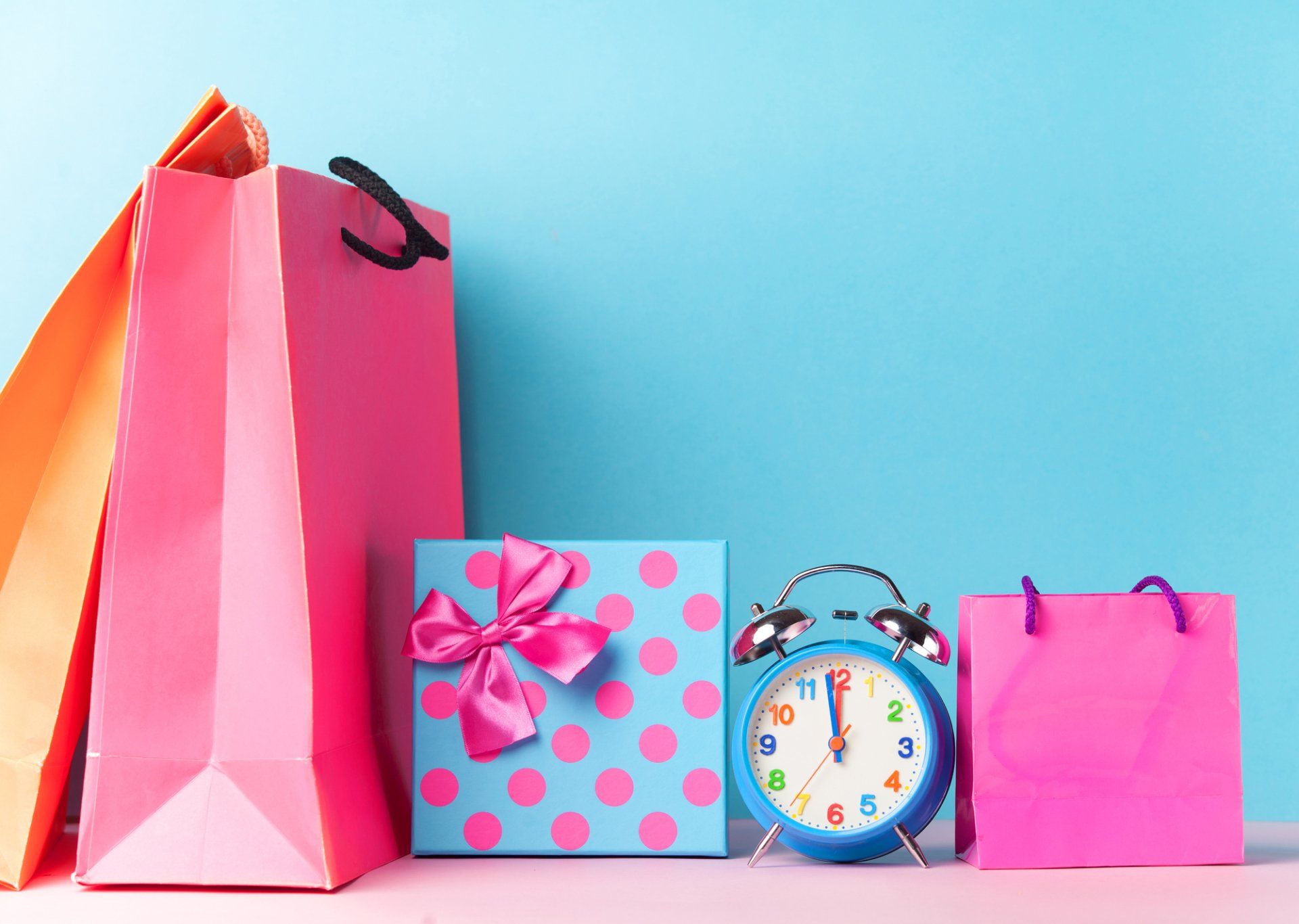Ecommerce in a post-pandemic world
As soon as the Covid-19 pandemic hit the UK, sending the country into lockdown in March 2020, years of ecommerce growth happened in just a few weeks.
The pandemic forced people to change their behaviour and embrace shopping online like never before – and many of them will stick with those changes permanently.
As shops were forced to close, ecommerce reached an all time high. Previously used mainly by Gen Z and Millennials, older people too started shopping online. Worldwide, nearly 150 million people shopped online for the first time during the pandemic, with 84% of consumers making an online purchase during that time.
Some businesses were ready for this unprecedented growth and able to adapt and respond, while others weren’t.

Companies which thought the whole thing would last a few weeks and they would just weather the storm missed out in a big way. Nobody could have foreseen another two national lockdowns and restrictions lasting for over year.
Businesses which already had thriving ecommerce operations were in the driving seat. They didn’t need a complete rethink of their business model, they were able to build on their expertise. The challenge for other companies was keeping up with them and making sure they got their share of the sales.
A year on, that challenge remains. The shops may have reopened, but many people are still wary of shopping in store. The pandemic brought about huge changes and those changes will remain for consumers and businesses alike.
If you want to benefit from these changes, drive more traffic and convert that traffic into sales for your ecommerce site, it is important to tap into the industry trends which are making a difference.
Omnichannel selling
Customers expect easy-to-use and intuitive experiences across different devices and channels. Brands which can deliver on that will see the best returns.
Omnichannel selling is a seamless and consistent shopping experience across channels, from your own website to social media to the big marketplaces, and across devices from smartphones to desktops. It is all about gearing up the ecommerce experience to the needs of the consumer, rather than what is more convenient for your business.
Omnichannel selling is becoming cheaper and more accessible, so it is no longer limited to big businesses with budgets to match. But it’s also not possible for a small or new business to be everywhere, so start with the channels your customers go the most and sell to them there – whether that is Amazon, Instagram, TikTok or somewhere else.
Customers who have a memorable experience while shopping will be more likely to return and a brand which can give them that omnichannel experience will be in a really competitive position.
Marketplaces
Businesses which have only recently developed their ecommerce may struggle to get noticed online. Many shoppers prefer the convenience of shopping with the big marketplaces eg Amazon, eBay and Etsy. These marketplaces offer free or low price delivery and everything a customer could want all in one place.
Marketplaces are undoubtedly one of the fastest ways to build your brand and increase your reach. Most importantly, half of all global ecommerce sales take place on marketplaces, according to Shopify.
Customers using the marketplaces are rarely searching for brands, they are searching for solutions and product types eg popular lockdown purchases like patio furniture, ladies’ loungewear or strength training equipment.
So if you’re just starting out, it makes sense to focus at least some of your efforts into selling in the marketplaces. That way, you can benefit from the high traffic and all of the advantages of working with a big business which really knows its stuff when it comes to selling online.
Make your marketplace product pages and images as beautiful as you would on your own website, to create an experience which customers will find it hard to ignore.
Your own website
While marketplaces are a good place to get noticed, don’t concentrate all of your efforts on them. Your own website is still really key to your ecommerce operation.
Marketplaces are a double-edged sword, which help you to drive sales by reaching customers who would never have found your website, but put pressure on prices and margins.
It’s essential not to ignore your own website while you are building your presence on Amazon, eBay, Etsy or any of the other marketplace. It’s important to remember that you don’t own the customer data when you sell on sites like Amazon, which can be a limit for your own brand’s growth.
So use marketplaces to sell limited products and drive traffic to your own website. Using the two together is all part of your omnichannel retailing.
Data from Shopify shows that consumers’ main reasons for shopping at a large, corporately owned business (like a marketplace) include:
- Product selection (57%)
- Low prices (51%)
- Reliable (34%)
But the important thing to remember is that a lot of customers like to shop with small, independent and family businesses, which can often offer an alternative to the big brands.
Data from Shopify shows consumers’ top reasons for shopping at an independently owned business (online or in store) include:
- Supporting entrepreneurship (33%)
- Unique products (33%)
- Good customer service (31%)
Even though so much business is now conducted online, customers still like a personal, human touch. This could be a personalised thank you email or a product which is carefully wrapped in brown paper and string, rather than shoved in an ordinary jiffy bag.
So marketplaces can drive business to your website in the first place, but then you need to focus on offering something the marketplaces can’t. By providing a personalised purchase journey through your own ecommerce site, you can start to build a relationship with customers which will encourage them to keep coming back for more.
Make it easy for customers
If you want customers to buy from your ecommerce store and keep coming back for more, you have to make it easy for them.
The majority of customers in the UK say that free delivery is a big factor in whether they choose to buy from a retailer. In fact, according to Shopify, 65% of consumers check whether free delivery is available before they even consider adding an item to their baskets.
Although it is a careful balancing act which could affect your bottom line, offering free delivery where possible could make a big difference to your sales. And if it’s too expensive for you to offer it with every purchase, consider setting a free delivery threshold for purchases over a certain amount, such as £20 or £50.
Even if you’ve got fantastic products and free delivery, it could all still go wrong at checkout. Your checkout pages are critical and a huge number of consumers are still happy to walk away, leaving several products in their basket, if the process isn’t quick and easy.
Options to speed up the process include:
· Save payment and delivery information, to allow for faster checkout for future purchases
· On the flip side, allow ‘guest checkout’, so customers don’t have to input as much information for a single purchase
· Cut out the ‘add to basket’ step by allowing customers to buy directly from your product pages
· Make the checkout process easy to use on mobiles
· Address security concerns with security trust marks such as Norton and Verisign, which is especially reassuring for customers who are new to your brand.
Use your analytics
To make the most of ecommerce opportunities for your business, you need to make the best use of your analytics. Basic data like click-through rates for specific campaigns and conversion metrics showing where the majority of your traffic and sales are coming from are essential.
But can you get much more from your analytics? The more data you have, the better you will understand your customers and the better you can target your site, your products and your brand to meet their needs.
If you can’t get all of this information from your analytics, can you upgrade to another (or additional) system which will give you more? The sort of essential data you are looking for includes:
· Which channels led customers to your site
· Detailed customer data including geographical area, age, gender, total spend and buying habits
· Which content (both on your site and externally) leads to the most conversions
This sort of information can help you to identify trends such as which products are refunded or returned most often, which customers prefer discounted items and which customers are more likely to abandon their purchases at checkout.
Shoppable ads on social media
Social media is a trend which isn’t going anywhere. Younger shoppers, including Generation Z (16-24 year olds) and Millennials (25-39 year olds), spend hours scrolling through their Instagram and TikTok feeds. So it is a great place to advertise your products.
Generation Z in particular like to buy things they’ve seen on social media and they don’t like the inconvenience of navigating away to a website. So it’s important that you make it possible to shop straight from the ads. If you don’t allow shopping straight from your social media ads, you can guarantee your competition will, and you will lose out on valuable business.
Video advertising can bring your products to life, with tutorials and ‘how to’ videos, or you can create slideshows from your product images. Use careful targeting for your ads eg geographical location, age, gender etc to ensure they are reaching the right audience.
While 2020 was a year we will never forget, it opened up huge ecommerce opportunities for businesses that were ready to take them. And as we move into a post-pandemic world, those opportunities are still there.
Customers have taken their business online and many of them won’t be going back to the shops any time soon, thanks to a combination of the huge choice online and safety fears.
Follow these tips and you will be ready to meet the needs of those customers in 2021 and beyond.
More Posts.


Cotswold Web Services.









